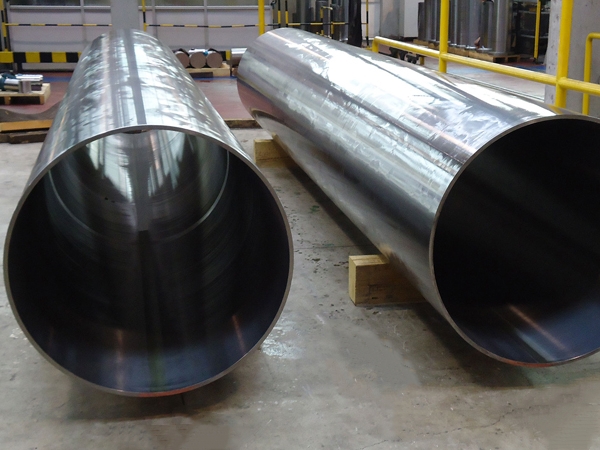Longitudinal submerged arc welded (LSAW) steel pipes are mainly used to transport low-pressure flowing gases such as water, steam, and gas. So, how to judge the quality of longitudinal submerged arc welded steel pipe? As a manufacturer with many years of experience in producing LSAW steel pipes, we will make some suggestions on the quality assessment of longitudinal submerged arc welded steel pipes from the following three points.

Thickness Measurement for Straight Seam Steel Pipes:
Straight seam steel pipes encompass high-frequency straight seam welded pipes (ERW steel pipes), submerged arc welded straight seam steel pipes (LSAW steel pipes), and other categories. As manufacturing technology advances, steel pipe production processes are evolving. The current trend is towards increased thickness in straight seam steel pipes, making them a viable alternative to certain stainless steel pipes.
Typically, when a straight-seam steel pipe requires a wall thickness of 10mm, the actual produced pipes may exhibit slight variations, such as 10.2mm or 9.75mm, which are considered normal deviations. However, some unscrupulous manufacturers may attempt to make substandard pipes appear thicker by using a hammer to blunt the ends. Therefore, when purchasing straight-seam steel pipes, it is advisable to use instruments for accurate thickness measurement, exposing any attempts to deceive through visual inspection.
Quality Assessment of Straight Seam Steel Pipes:
a. Uniformity of Material: Inferior straight seam steel pipes often contain excessive impurities and uneven materials, resulting in low steel density and significant deviations in size and weight. On the other hand, high-quality straight-seam steel pipes are crafted from uniform, high-quality materials, featuring a consistent composition and smooth, neatly cut surfaces.
b. Strength Compliance: Substandard straight seam steel pipes may be prone to cracking or bending, struggling to withstand gravity and pressure differentials. In contrast, high-quality straight-seam steel pipes exhibit high strength, resilience against damage, and an extended service life.
c. Specification and Weight Accuracy: Poor-quality straight-seam steel pipes may deviate in size and exhibit substandard weight due to process or human errors. Conversely, high-quality straight-seam steel pipes demonstrate minimal errors in size, sufficient weight, and compliance with industry standards.
Factory Inspection Procedures for Straight Seam Steel Pipes:
Prior to leaving the factory, straight seam steel pipes undergo a series of stringent tests. In case any pipe fails to meet the factory standards, the non-compliant pipes are singled out, and double the number of samples is extracted from the same batch for re-inspection. If the re-inspection results do not meet the required standards, the entire batch is deemed unsuitable for shipment from the factory. This meticulous factory inspection process ensures the quality and reliability of straight seam steel pipes before they reach the end user.